In this review, we’ll be sizing up two of the most popular mattresses on the market: the Casper mattress and Leesa mattress. Both beds are built entirely of foam, but they have two totally distinct feels. So which is right for you?
Well folks, that’s what we’re here to find out. I’m going to compare and contrast every aspect of these two models, from their divergent constructions all the way to their unique feel profiles.
If you don’t have time to read my full comparison, you can jump down to my review summary.
Casper vs Leesa
Product
Firmness
Score

Product
Firmness
Score
Casper vs Leesa Mattress Overview
Here’s a brief overview of the strong points of the Casper and Leesa, as well as which type of sleepers are best suited for them.
| Casper is best for… | Leesa is best for… |
| Couples | Seniors |
| Seniors | Back sleepers |
| Back pain | Side sleepers |
Casper vs Leesa Video Review
Need a quick rundown of each mattress and who I recommend them for? Check out my Casper vs Leesa video review below.
Casper vs Leesa: Top Similarities
- Construction: Both are all-foam mattresses and could be nice options for back sleepers.
- Cooling: Both mattresses sleep cool, which is a great perk for hot sleepers.
- Sleep position: If you’re a stomach sleeper, I don’t think either of these mattresses will be firm enough to offer the support you need. I’d suggest opting for one of our best mattresses for stomach sleepers.
Casper vs Leesa: Top Differences
- Zone support: The Casper uses a zoned support system (more on that below), so it will feel softer at the shoulders than the Leesa.
- Firmness: The Casper is a little firmer than the Leesa, which could be nice for anyone who prefers a firmer feel.
- Price: The Leesa is just a little cheaper than the Casper mattress, which could be an important deciding factor.
Casper vs Leesa: Construction & Feel Differences
When deciding what the best mattress is for you, one of the most crucial factors is always going to be feel. So let’s take a moment to cover areas such as firmness, pressure relief, motion isolation, and other performance factors between these two beds. Remember, these factors are highly subjective and can vary significantly based on individual body size, shape, and weight.
What’s the Firmness Difference?
It’s important to understand that, when it comes to mattresses, firmness isn’t a one-size-fits-all scenario. Your size, weight, shape, and other factors all determine your ideal level of firmness. So your preferences might not be the same as mine. When testing a mattress for firmness, we try to capture the variance different people might feel.
When I’m in the mattress lab, I test every bed with colleagues of various body shapes, types, and sizes, then average those responses to determine the final firmness score. We rate firmness on a scale of 1 to 10 with 1 being the softest and 10 being the firmest. For reference, the industry standard for a medium-firm mattress is a 6.5 on the firmness scale.


In this case, my colleagues and I gave the Casper 7 out of 10 on the firmness scale, putting it slightly above the industry standard. The Leesa Original was much softer than the Casper, landing at 5.5 out of 10 on the same scale.
What Does Each Mattress Feel Like?
We gave the Casper a 7 out of 10 on the firmness scale. The industry standard for medium-firm is a 6.5 out of 10, so this bed-in-a-box has a slightly firmer feel. However, the Casper uses a zoned support system, which means this bed will feel firmer in the center, where you need extra support at the hips, and softer at the shoulders, where most people need extra pressure relief.
The extra sinkage at the shoulders might be nice for side and back combination sleepers, as they’ll enjoy a mix of support and relief that works well for spinal alignment and comfort in both positions. The extra sinkage might also make the original Casper feel more medium-firm than firm to certain sleepers.
Overall, the Casper has a balanced feel that should attract sleepers who switch positions often during the night. Because of the mix between pressure relief and support in sensitive areas, combo sleepers can find comfort in different positions.

I gave the Leesa a 5.5 out of 10 on the firmness scale — making the Leesa a little less firm than the industry standard. I thought it provided good spinal alignment for strict back sleepers. The Leesa does include some memory foam for body-contouring and relief around your pressure points, but it doesn’t have that slow-moving, quicksand feel that some people may associate with memory foam.
The mix of support foams in this mattress means it should sleep nice and cool, which is a great feature for hot sleepers and couples. On the other hand, the Leesa doesn’t do a particularly good job isolating motion transfer, so if you sleep with an especially restless partner, you may want to opt for something that offers more sinkage.

How Does The Construction Differ?

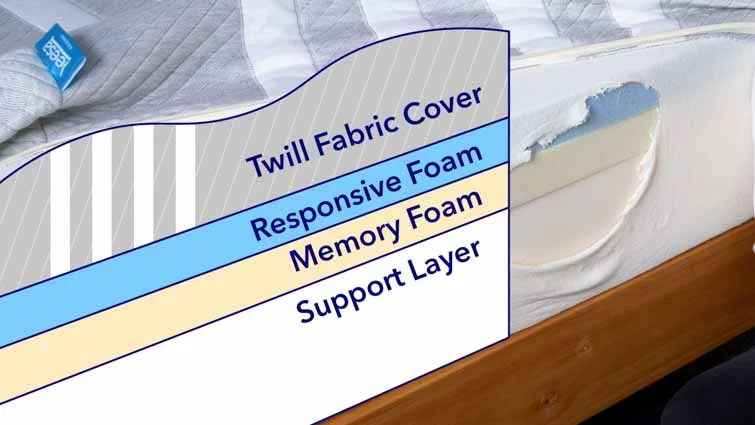
Casper vs Leesa Per Body Type
Every mattress will feel different to sleepers depending on individual attributes and preferences, such as body weight and sleeping position. Up next, I’ll compare how the Casper and Leesa mattresses perform for various sleepers.
Casper Body Weight Scale
| Body Weight | Side | Back | Stomach |
|---|---|---|---|
| Light (under 130 lbs) | unpleasant | good | good |
| Average (130-230 lbs) | good | good | unpleasant |
| Heavy (over 230 lbs) | unpleasant | unpleasant | unpleasant |
| Body Weight: Light (under 130 lbs) | |
|---|---|
| Side Sleeper | unpleasant |
| Back Sleeper | good |
| Stomach Sleeper | good |
| Body Weight: Average (130-230 lbs) | |
| Side Sleeper | good |
| Back Sleeper | good |
| Stomach Sleeper | unpleasant |
| Body Weight: Heavy (over 230 lbs) | |
| Side Sleeper | unpleasant |
| Back Sleeper | unpleasant |
| Stomach Sleeper | unpleasant |
Leesa Body Weight Scale
| Body Weight | Side | Back | Stomach |
|---|---|---|---|
| Light (under 130 lbs) | unpleasant | excellent | good |
| Average (130-230 lbs) | good | excellent | unpleasant |
| Heavy (over 230 lbs) | unpleasant | unpleasant | unpleasant |
| Body Weight: Light (under 130 lbs) | |
|---|---|
| Side Sleeper | unpleasant |
| Back Sleeper | excellent |
| Stomach Sleeper | good |
| Body Weight: Average (130-230 lbs) | |
| Side Sleeper | good |
| Back Sleeper | excellent |
| Stomach Sleeper | unpleasant |
| Body Weight: Heavy (over 230 lbs) | |
| Side Sleeper | unpleasant |
| Back Sleeper | unpleasant |
| Stomach Sleeper | unpleasant |
Casper vs Leesa Comparing Mattress Performance
Temperature
Several factors contribute to a mattress’s cooling ability. First and foremost, I consider its construction. Since both mattresses are memory foam models, they won’t sleep as cool as their innerspring and hybrid counterparts.
After laying on each for a few minutes and measuring how much heat each one trapped with our trusty thermal gun, I found that the Casper performed better overall. During testing, the Casper’s surface temperature only increased by 8.4 degrees, indicating decent cooling abilities.
On the other hand, I also thought the Leesa stayed cool for a memory foam mattress. Most traditional foam beds retain a lot of heat, but both the Casper and Leesa do a decent job of dispersing heat and regulating temperature.
Motion Isolation
Motion isolation refers to how likely you are to feel your bedmate’s movements throughout the night. We’re looking for high motion isolation (or low motion transfer) here, meaning the bed dissipates motion evenly across the structure. While everyone will want to pay attention to this measure, it could be useful for couples.
To determine how good a bed is at isolating motion, I perform a few tests. One of those tests consists of dropping a steel ball from various heights and measuring the disturbance it causes using a seismometer.
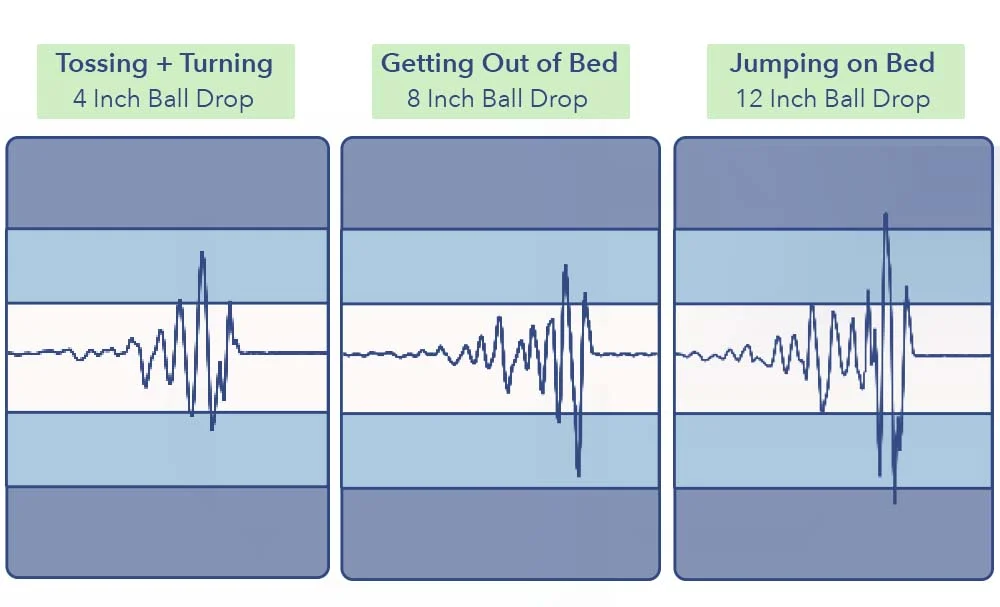

During this test, I found that the Casper and Leesa mattresses are quite responsive, especially considering their all-foam construction. While bounciness and responsiveness are great qualities to have in a bed for sex, it means you’ll likely feel more movement from your partner as they toss and turn.
Edge Support
Both beds have okay edge support. This is not uncommon, as most all-foam mattresses are going to have problems with sturdy borders. The perimeter of the Leesa is a bit unwieldy and could cause too much sinkage, likely because it is only a 5.5 on the firmness scale.
On the other hand, I felt supported while lying along the edge of the Casper, thanks to its higher-than-average firmness. While I still detected some sinkage on the Casper, I would still say it has better edge support than the Leesa by a considerable margin.
Pressure Relief
The Casper outperformed the Leesa in our pressure relief category. To test pressure relief, we use a specialized mat to measure how much pressure the materials are putting on different parts of the body. The mat then creates a graphic or “map” of the body using color-coded imagery. Areas with low pressure buildup are blue and green, and areas with high pressure buildup are yellow and red.
As you can see on the map below, there is a lot of blue and green, indicating that the Casper mattress is good at relieving pressure. However, you can see that there is a bit more pressure around the hips and shoulders, meaning it might be too firm for strict side sleepers and folks with sensitive joints.
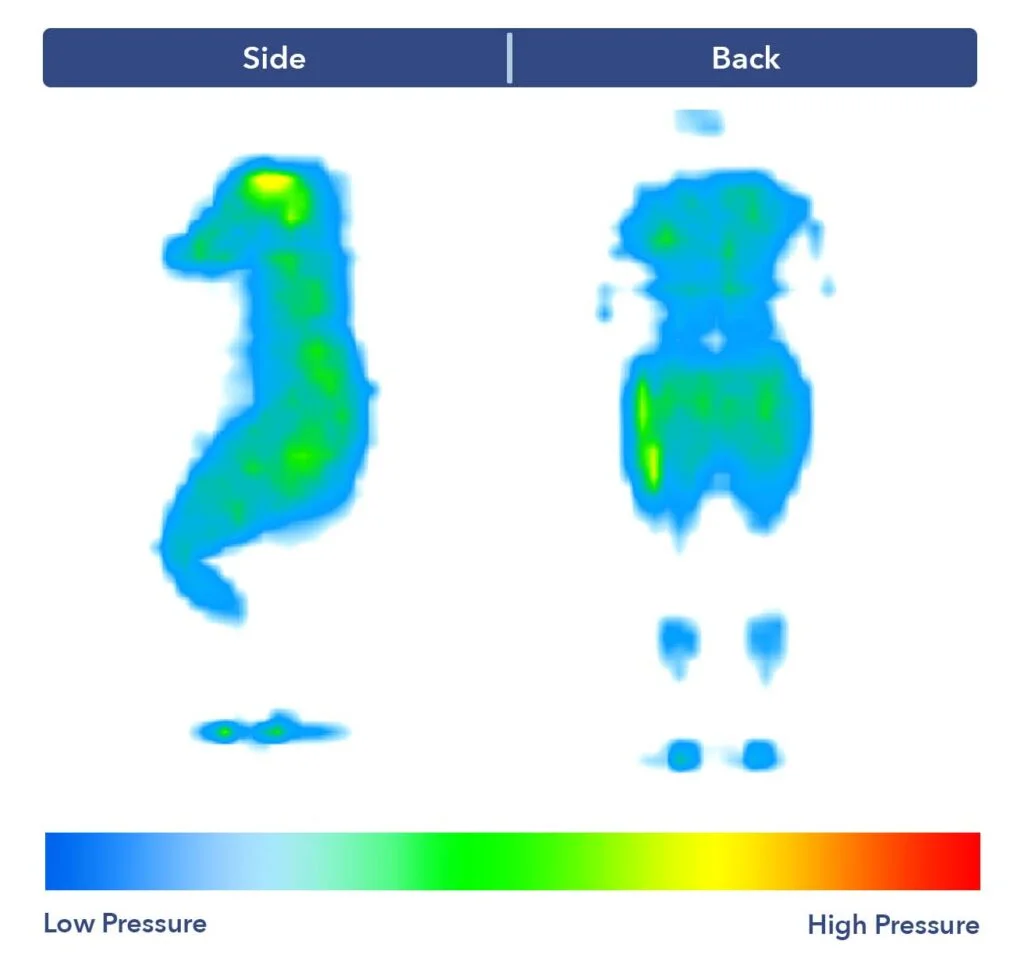

However, the Leesa’s results show some red spots in the same areas, indicating high pressure buildup. Overall, I think both mattresses are good options for back sleepers, but I wouldn’t recommend either to strict side sleepers or those who struggle with joint pain.
Pain Relief
The results of the pressure relief test can indicate whether these mattresses aid in reducing pain in specific areas. I think the Casper and Leesa are good options for most back sleepers. However, side sleepers, especially those with sensitive joints, should definitely go with one of our best mattresses for side sleepers or best memory foam mattresses.
Durability
I would say the Casper is more durable than the Leesa. The Casper offers slightly better edge support, meaning it’s less likely to sag prematurely. On the other hand, the Leesa mattress has dense support base foam which should add some longevity to it.
Company Policies
Casper Policies
- Trial Period – 100 nights
- Shipping – Free shipping
- Mattress Warranty – 10-year warranty
Leesa Policies
- Trial period – 100-night sleep trial
- Shipping – Free shipping
- Mattress Warranty – 10-year warranty
Casper Customer Service Rating
- Stellar: When contacting Casper’s customer service, I was immediately paired with a helpful agent who answered all my questions about Casper’s warranty thoroughly and transparently. When I did ask a question, it was answered politely and in detail.
Leesa Customer Service Rating
- Satisfactory: I gave Leesa a satisfactory score because they didn’t have someone manning their phones or chat feature when we reached out. Their customer service team emailed us a very thoughtful response to my question (and returned our call), but we did have to wait for a response.
Comparing Casper vs Leesa Price
When deciding between the Casper and Leesa mattresses, your decision may come down to price. Let’s take a peek at how much these beds cost in our pricing chart. Keep in mind that you can always visit our Casper mattress coupon and Leesa mattress coupon pages for deals.
Prices listed will be before discount or offer for each size.
| Size | Casper | Leesa |
|---|---|---|
| Twin | $895 | $849 |
| Twin XL | $995 | $899 |
| Full | $1,195 | $1,099 |
| Queen | $1,295 | $1,199 |
| King | $1,695 | $1,399 |
| California King | $1,695 | $1,399 |
Other Casper and Leesa Mattress Comparisons
Wondering how the Casper and Leesa stack up to some of their competitors from other online mattress companies? Take a look at some of our other comparisons below.
Casper vs
- Casper vs Helix
- Casper vs Leesa
- Casper vs WinkBeds
- Casper vs Purple
- Casper vs DreamCloud
- Casper vs Endy
- Casper vs Lull
- Casper vs Puffy
- Casper vs Layla
- Casper vs Brooklyn Bedding
- Casper vs Saatva
- Casper vs GhostBed
Leesa vs
- Leesa vs Layla
- Leesa vs Nectar
- Leesa vs Leesa Hybrid
- Leesa vs Brooklyn Bedding
- Leesa vs Helix
- Leesa vs GhostBed
- Leesa vs Purple
- Leesa vs Loom and Leaf
- Leesa vs Tempurpedic
- Leesa vs Tuft & Needle
- Leesa vs Yogabed
Comparing Other Mattress Models
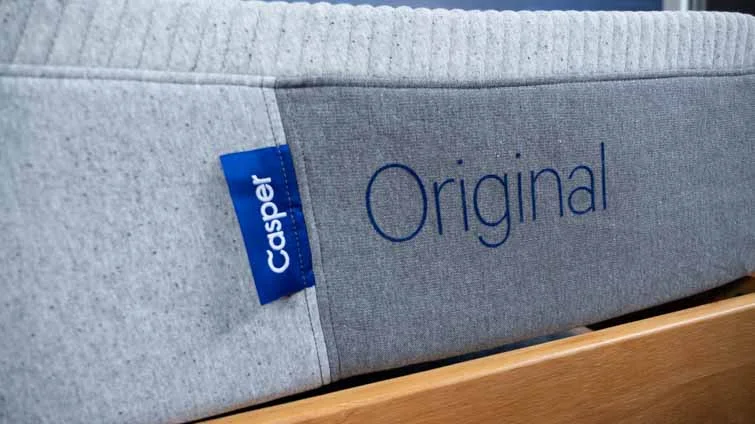 |  |  | 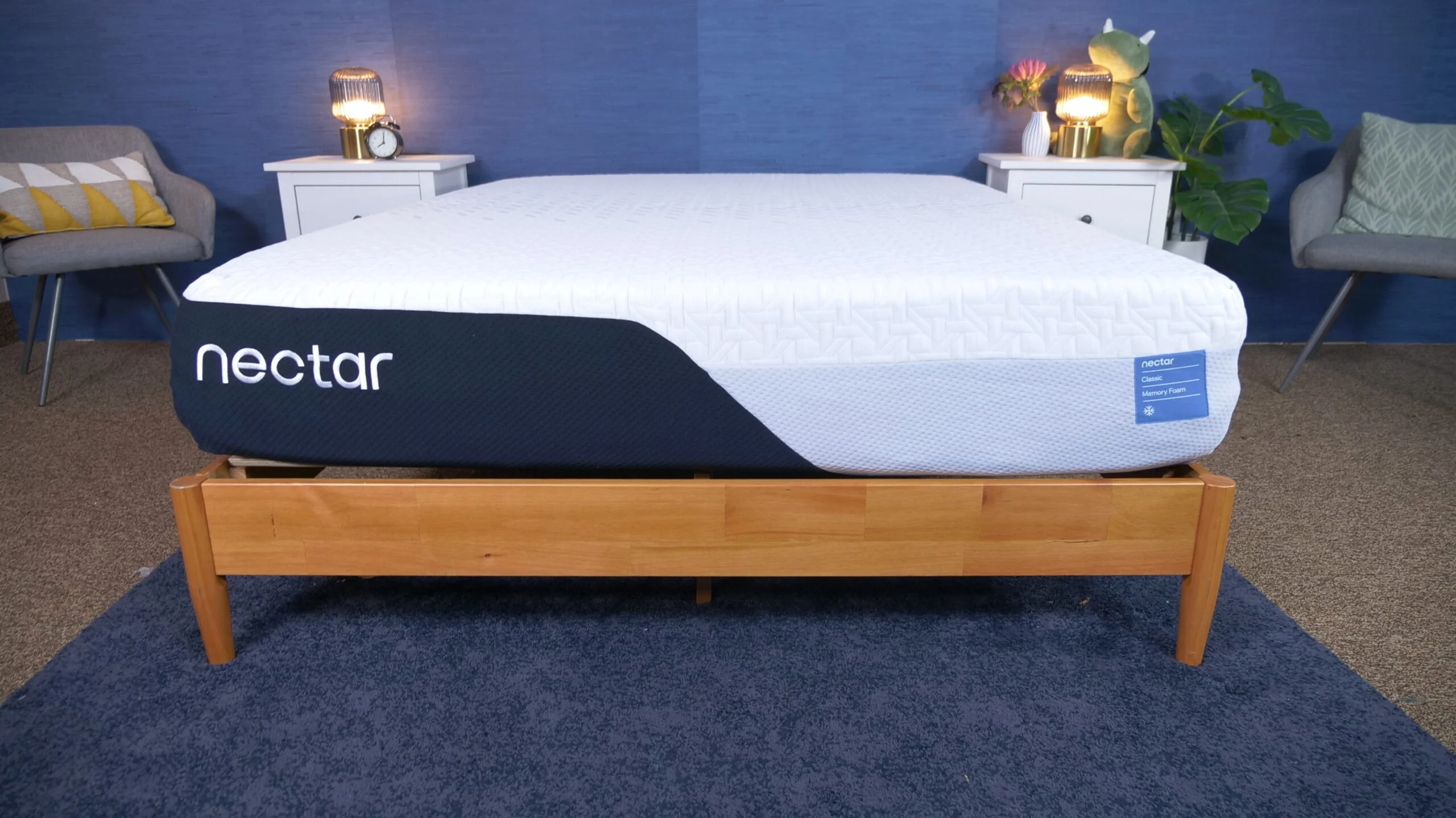 |  | 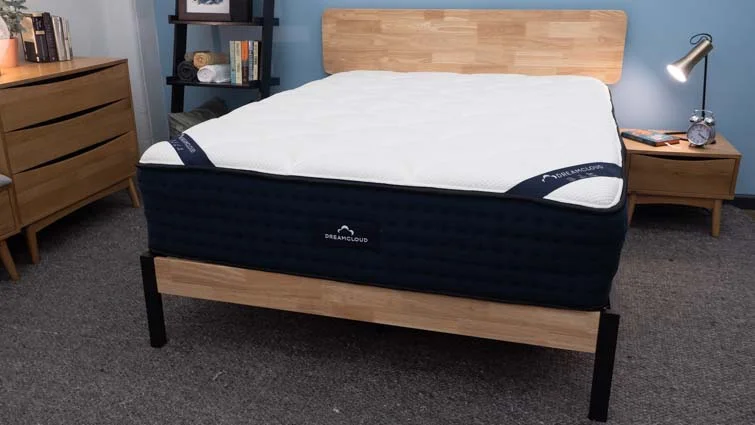 | 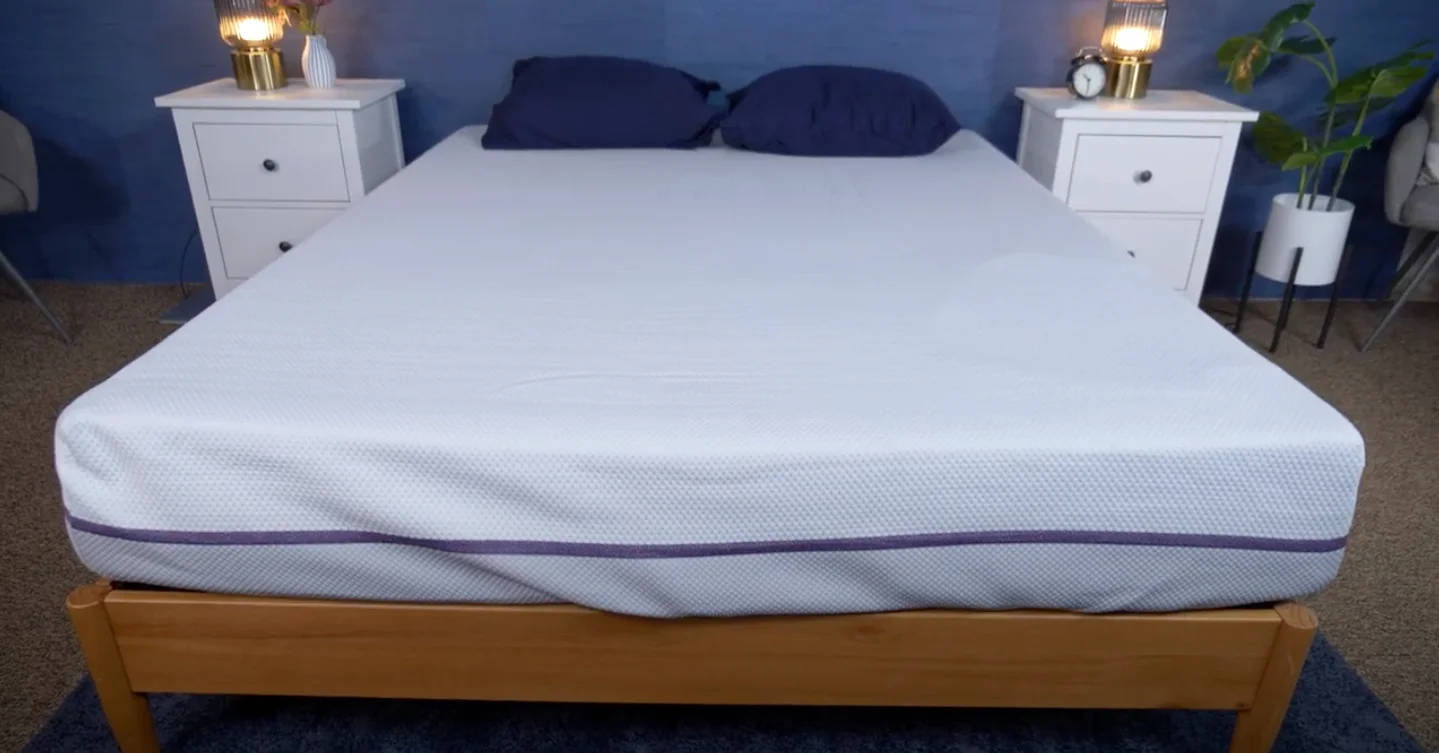 | |
| Casper The One Mattress | Leesa Original Mattress | Saatva Classic | Nectar Mattress | Helix Midnight Mattress | DreamCloud Original Mattress | Purple Mattress | |
| Rating | |||||||
| Firmness | Firm: 7/10 | Soft: 5.5/10 | Multiple firmness options | Medium-firm: 6.5/10 | Medium-firm: 6.5/10 | Medium-firm: 6.5/10 | Firm: 7/10 |
| Material | Foam | Foam | Innerspring | Foam | Hybrid | Hybrid | Hybrid |
| Cooling | — | — | — | — | — | ||
| Best For | Back Pain, Seniors, Couples | Side Sleepers, Back Sleepers, Stomach Sleepers, Seniors | Back Sleepers, Stomach Sleepers, Hot Sleepers, Back Pain, Seniors | Side Sleepers, Back Sleepers, Stomach Sleepers, Back Pain, Couples | Side Sleepers, Back Sleepers, Couples | Back Sleepers, Stomach Sleepers, Hot Sleepers, Seniors | Side Sleepers, Back Sleepers, Stomach Sleepers |
Casper vs Leesa Frequently Asked Questions
How do the Casper and Leesa mattresses ship?
Casper and Leesa both offer free shipping on all their mattresses.
What are the return policies for the Casper and Leesa mattresses?
Both brands offer a 100-night sleep trial on their mattresses. If you decide you don’t like your mattress within this period, you can return it for a full refund (minus some shipping costs).
Is the Casper softer than the Leesa mattress?
No, the Casper is not softer than the Leesa mattress. The Leesa Original is considerably softer than the Casper mattress, at 5.5 out of 10 on the firmness scale. The Casper is a 7 out of 10 on the same scale, meaning its slightly firmer than the average bed.
Are the Casper and Leesa mattresses good for hot sleepers?
The Casper outperformed the Leesa on our cooling tests. However, hot sleepers will likely get too toasty on both beds due to their traditional memory foam construction. I recommend checking out of our best cooling mattresses instead.
Our Final Take
As I finish this comparison, I’ll leave you with what I like most about the Casper and point out some of my complaints.
Here’s what I thought the Lessa did right and some areas where I believe it missed the mark.
Our Review Process
Our Sleepopolis reviewers personally test each mattress. We start by unboxing the mattress to figure out how difficult (or easy) it is to get the mattress from the box to the bed. Then, we spend time laying on the bed in different positions, taking time to assess it on our backs, stomachs, and sides. Next, we perform our Sleepopolis tests, using specialized tools to measure qualities like motion transfer, bounce, and pressure relief. Our last step is to open up the mattress and take a look at each layer. These steps allow us to give our final verdict on the mattress.


























